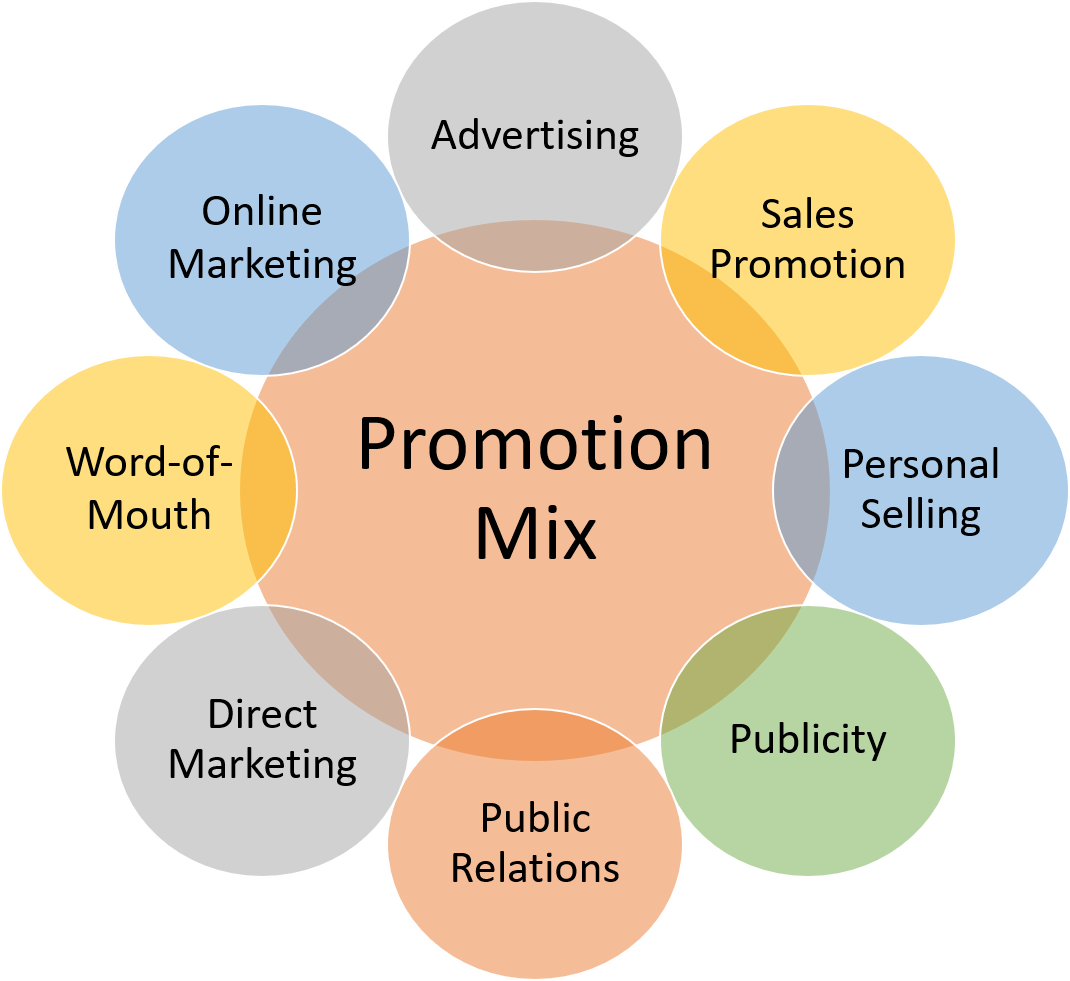Promotion/marketing communication is one of the components of marketing mix. Traditionally, promotion included advertising (through various media), sales promotions and personal selling techniques. In modern times, variety of promotional tools with widespread scope is available in the market. These include e-commerce/online marketing, point-of-purchase displays, sponsorship, trade shows, exhibitions, event marketing, packaging, customer service and corporate communications. The process of combining all the promotional tools and techniques with the other elements of marketing mix in order to achieve competitive advantage is called ‘promotion mix’. Thus, it can be concluded that promotion Mix or Marketing Communication Mix involves the combined use of different promotional tools (like advertising, sales promotion, personal selling, publicity and personal relations) by an organisation to generate, sustain and improve the demand of its products and services.
Generally, an organisation uses more than a single method of promotion. The manager of the organisation is responsible for taking decisions regarding the selection of promotional tools and finalising the promotional campaign. Thus, a promotion mix is designed for effectively communicating with target customers. In case, these promotional tools are strongly integrated to attain and even exceed the particular promotional objective, it is called Integrated Marketing Communication (IMC). Marketers prefer IMC over other methods as it is the most successful way of promoting a particular brand in a given situation.
Elements of Promotion Mix

The key elements of promotion mix/communication mix are as follows:
- Advertising
- Sales Promotion
- Personal Selling
- Publicity
- Public Relations
- Direct Marketing
- Word-of-Mouth
- Online Marketing
Advertising: Advertising is a kind of promotional message developed by organisations that influence the target consumers to buy the offered product(s). This is done through different paid media like commercials on radio and television, billboards, ads in newspapers, etc. Now-a-days, ‘product placement’ is used for advertising.
Sales promotion: Apart from advertising, another significant promotional tool is sales promotion, which helps in improving the sales by influencing the potential customer to buy the promoted product, The different sales promotion techniques include sample distribution, point of purchase display, premium coupon, off-price selling, etc.
Personal Selling: Personal selling is the personal interface (telephonic or face-to-face) between the prospective buyer and the seller, Influencing the buyer to acknowledge a particular issue, convincing the buyer to follow a particular course of action or building a sound customer relationship, are the primary intentions of this interface.
Publicity: Publicity is an impersonal not-paid technique of promotion. where the demand for organisational products and services is enhanced through devising editorial remark or supporting news within the print media or through finding an encouraging presentation of it on stage, TV or radio.
Public Relations: Generally, the public relations (PR) is a promotional tool responsible for developing and maintaining the brand image of an individual, institution or organisation, within the eyes of the concerned public. In terms of PR, a public is someone, who can draw an opinion about the concerned individual, institution or organisation.
Direct Marketing: Sometimes, organisations directly approach to prospective customers to develop feedback and/or build sales. Conventionally, direct marketing has not been included in the promotional mix. But, now-a-days, as it encompasses different strategies, budgets and purposes, and is utilised by different organisations as a part of their IMC plan, marketers regularly claim direct marketing as a part of the promotion mix.
Word-of-Mouth: Word-of-mouth is referred to as the transiting of information from individual to individual. Initially, the was associated only With oral communication. But, now it covers all kinds of human interfaces, such as face-to-face interaction, email communication. telephone and through sending texts. A positive word-of-mouth promotion is not possible until the customers have positive experience with an organisation. Such word-of-mouth promotions can be developed through providing services of high standards.
Online Marketing: Online marketing or interactive marketing is the new technique of promotion. Apart from other conventional forms of promotion like advertising, personal selling or sales promotion, which are directed towards the customers only, this interactive marketing facilitates the target customers to interact with the organisation also. This includes responding to promotional questions, making queries, receiving and editing information and images. Besides Internet, there are other interactive media forms like interactive television, CD-ROMs, and kiosks. The interactive Internet containing world wide web, however, persists to be the most influential and impactful method of marketing.